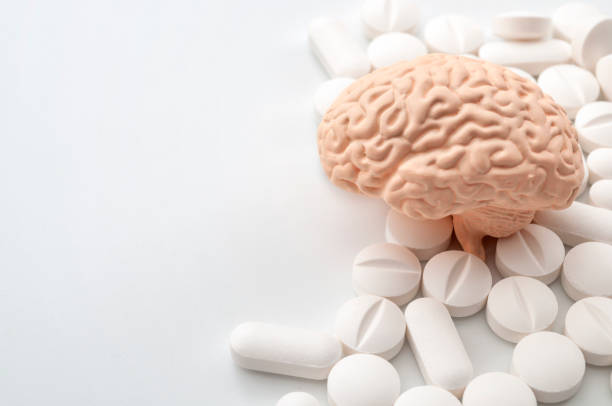The First Red Flag Of Bipolar Disorder! (Take A Quick Test)
Have you ever experienced intense mood swings that seem to come out of nowhere — soaring energy one moment and overwhelming exhaustion the next? These emotional rollercoasters might be more than just stress. Recognizing the very first red flag of bipolar disorder can make all the difference in getting the right support early on. In this article, we’ll help you identify that critical warning sign and give you a quick, insightful test to assess your emotional patterns — all in under 2 minutes.

What is bipolar disorder and how common is it?
Bipolar disorder is a complex mental health condition characterized by extreme mood swings, including emotional highs (mania or hypomania) and lows (depression). It affects approximately 2.8% of adults in the United States, making it a significant concern for millions of people. Understanding the early signs of bipolar disorder is crucial for timely intervention and proper management of the condition.
What is the first red flag of bipolar disorder?
The first and most noticeable red flag of bipolar disorder is often a manic or hypomanic episode. This period is characterized by an unusually elevated mood, increased energy, and decreased need for sleep. During this time, individuals may experience racing thoughts, engage in risky behaviors, or feel invincible. It’s important to note that this elevated state can be mistaken for productivity or happiness, making it challenging to identify as a potential issue.
How can you recognize manic or hypomanic symptoms?
Recognizing manic or hypomanic symptoms is crucial for early detection of bipolar disorder. Some key indicators include:
-
Feeling unusually energetic or “wired”
-
Decreased need for sleep without feeling tired
-
Increased talkativeness or speaking rapidly
-
Racing thoughts or jumping from one idea to another
-
Engaging in risky behaviors (e.g., excessive spending, reckless driving)
-
Inflated self-esteem or grandiosity
-
Easily distracted or difficulty concentrating
If you or someone you know experiences several of these symptoms for a prolonged period, it may be time to take a bipolar test quiz or consult a mental health professional.
What are the symptoms of bipolar depression?
While mania or hypomania is often the first noticeable sign, bipolar disorder also involves periods of depression. Recognizing these symptoms is equally important:
-
Persistent feelings of sadness, emptiness, or hopelessness
-
Loss of interest in activities once enjoyed
-
Significant changes in appetite or weight
-
Sleeping too much or too little
-
Fatigue or loss of energy
-
Difficulty concentrating or making decisions
-
Thoughts of death or suicide
It’s crucial to understand that bipolar disorder involves both manic and depressive episodes, which can vary in intensity and duration.
How can a bipolar test help in early detection?
Taking a bipolar test can be an essential first step in identifying potential symptoms of bipolar disorder. These tests are designed to assess your mood patterns, energy levels, and behaviors over time. While not a substitute for professional diagnosis, they can provide valuable insights and help you determine if further evaluation is necessary.
Online bipolar disorder tests often include questions about your mood swings, sleep patterns, energy levels, and thought processes. They may also inquire about any family history of mental health conditions, as bipolar disorder can have a genetic component. Remember, these tests are tools for self-awareness and should be followed up with a consultation with a mental health professional for an accurate diagnosis.
Where can you take a reliable bipolar test quiz?
Several reputable organizations offer online bipolar tests that can help you assess your symptoms. Here’s a comparison of some well-known resources:
| Provider | Test Type | Features | Accessibility |
|---|---|---|---|
| National Alliance on Mental Illness (NAMI) | Mood Disorder Questionnaire | Validated screening tool, free | Online, easily accessible |
| Depression and Bipolar Support Alliance (DBSA) | Bipolar Self-Test | Comprehensive, free | Online, printable version available |
| Psychology Today | Bipolar Depression Test | In-depth analysis, free | Online, requires email for results |
| MindSpot Clinic | Bipolar Disorder Quiz | Australian-based, clinically validated | Online, free, follow-up support available |
| Psycom | Bipolar Disorder Test | User-friendly interface, free | Online, immediate results |
Prices, rates, or cost estimates mentioned in this article are based on the latest available information but may change over time. Independent research is advised before making financial decisions.
Remember, while these tests can provide valuable insights, they are not substitutes for professional medical advice. If you’re concerned about your mental health, always consult with a qualified healthcare provider for a thorough evaluation and personalized treatment plan.
In conclusion, recognizing the first red flag of bipolar disorder – often a manic or hypomanic episode – is crucial for early intervention and effective management of the condition. By understanding the symptoms of both manic and depressive phases and utilizing available screening tools, you can take proactive steps toward maintaining your mental health. If you suspect you might be experiencing symptoms of bipolar disorder, don’t hesitate to reach out to a mental health professional for guidance and support.
This article is for informational purposes only and should not be considered medical advice. Please consult a qualified healthcare professional for personalized guidance and treatment.




